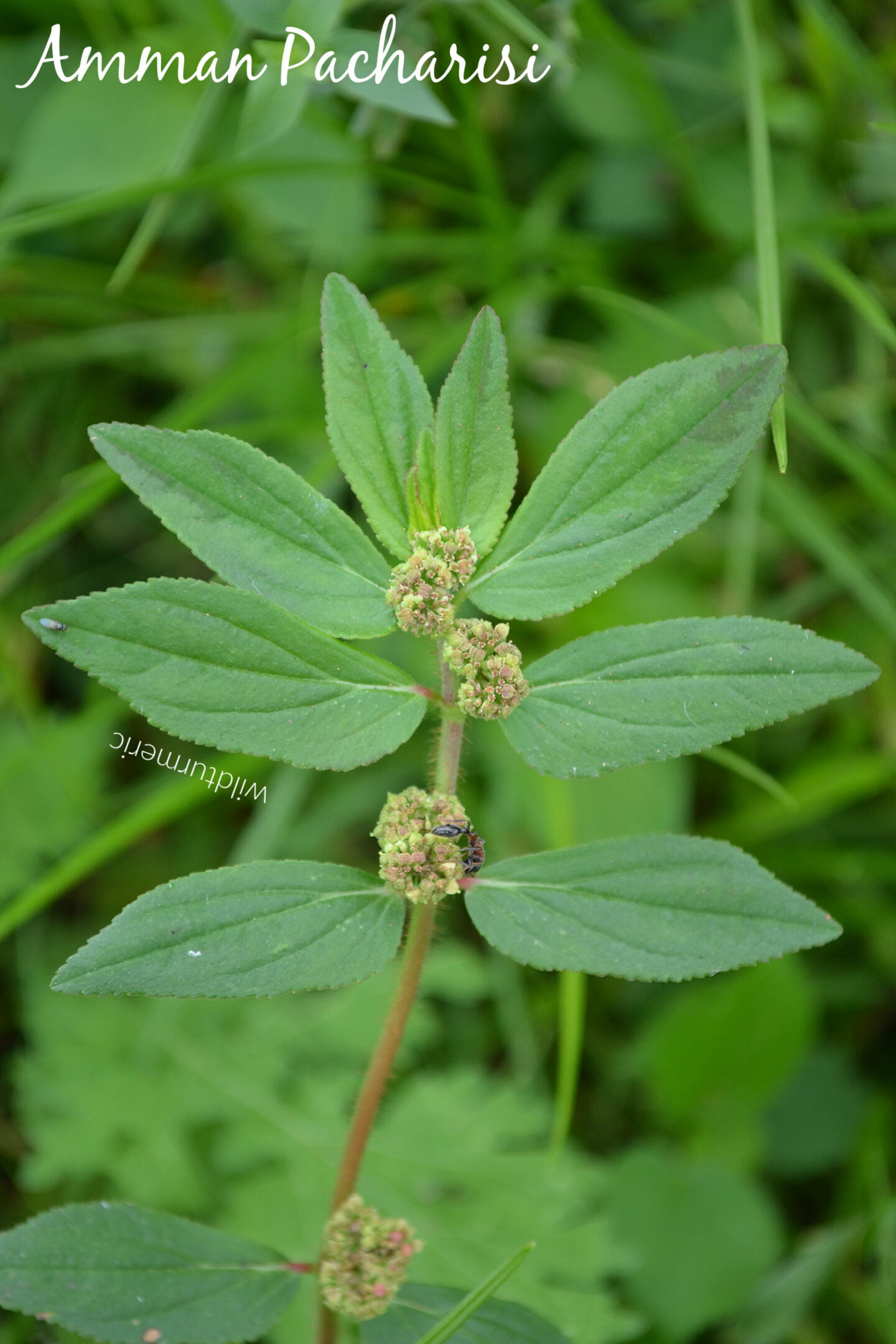
The Amman Pacharisi plant, often known as the asthma plant, is a remarkable herb with numerous medicinal uses and health benefits. It’s a popular home remedy for asthma, which is why it earned its nickname. In Tamil Nadu, Amman Pacharisi powder is widely used for skincare, particularly for treating warts, pimples, and wounds. Every part of the plant is utilized for its medicinal properties, including the white milky sap it produces.
Amman Pacharisi Plant:
Leaf:
Amman Pacharisi is a perennial herb that can reach up to 60 cm in height. Characterized by its erect, slender stems that often spread outwards, the plant has a distinct, somewhat hairy surface. The leaves of amman pacharisi are small, oblong, and serrated along the edges, growing in pairs along the stem. Each leaf measures between 1 to 3 centimeters in length and
Flowers:
The flowers of amman pacharisi are tiny and grow in dense, rounded clusters known as cyathia. These clusters are typically found at the axils of the leaves and are pale green or reddish in color. Following the flowering phase, the plant produces small, three-lobed fruits containing seeds. Each seed is ovoid in shape and has a smooth, brown surface, ensuring they blend naturally with the surrounding foliage.
Growing Conditions:
Amman Pacharisi thrives in a variety of environments but prefers warm and tropical climates. It is typically found in roadside areas, open grasslands, and disturbed sites, making it a common sight in diverse habitats ranging from rural to urban settings. The plant is known for its ability to grow in poor soil conditions, although it favors well-drained, sandy soils for optimal growth. Despite this preference, amman pacharisi is remarkably resilient, capable of flourishing even in less than ideal growing conditions.
Special Features:
What distinguishes amman pacharisi from other plants within the Euphorbia genus is its milky latex, which is released when any part of the plant is broken or injured. This feature is not only unique but also significant, as the latex has been traditionally used in various medicinal applications. This plant is found abundantly in our farm. Amman Pacharisi is edible and often cooked with lentils and served with rice and a bit of homemade ghee to treat mouth ulcers.
Amman Pacharisi Plant Scientific & Common Names:
The botanical name for Amman Pacharisi is Euphorbia hirta, a member of the Euphorbiaceae family, known for its diverse and medicinally significant genera. Euphorbia hirta is called by various common names in different cultures, reflecting its unique characteristics and traditional uses.
In Tamil, it’s known as Amman Pacharisi, where “Amman” refers to a goddess or mother spirit, and “Pacharisi” means raw or fresh rice, hinting at the plant’s granular-looking latex. This name, therefore, highlights both the sacred and common medicinal uses of the plant in traditional remedies.
Around the world, Euphorbia hirta is commonly known as the asthma-plant, highlighting its traditional use in treating respiratory conditions like asthma and bronchitis. In the Philippines, it’s called “tawa-tawa,” and is used in folk medicine for dengue fever, believed to help increase platelet counts.
In English-speaking countries, it’s sometimes referred to as “snakeweed,” reflecting its traditional use for treating snake bites. In Hindi, it is known as “Dudhi” due to its milky latex. It’s also called Akkigida in Kannada, Nilapala in Malayalam, and Nanabalu in Telugu.
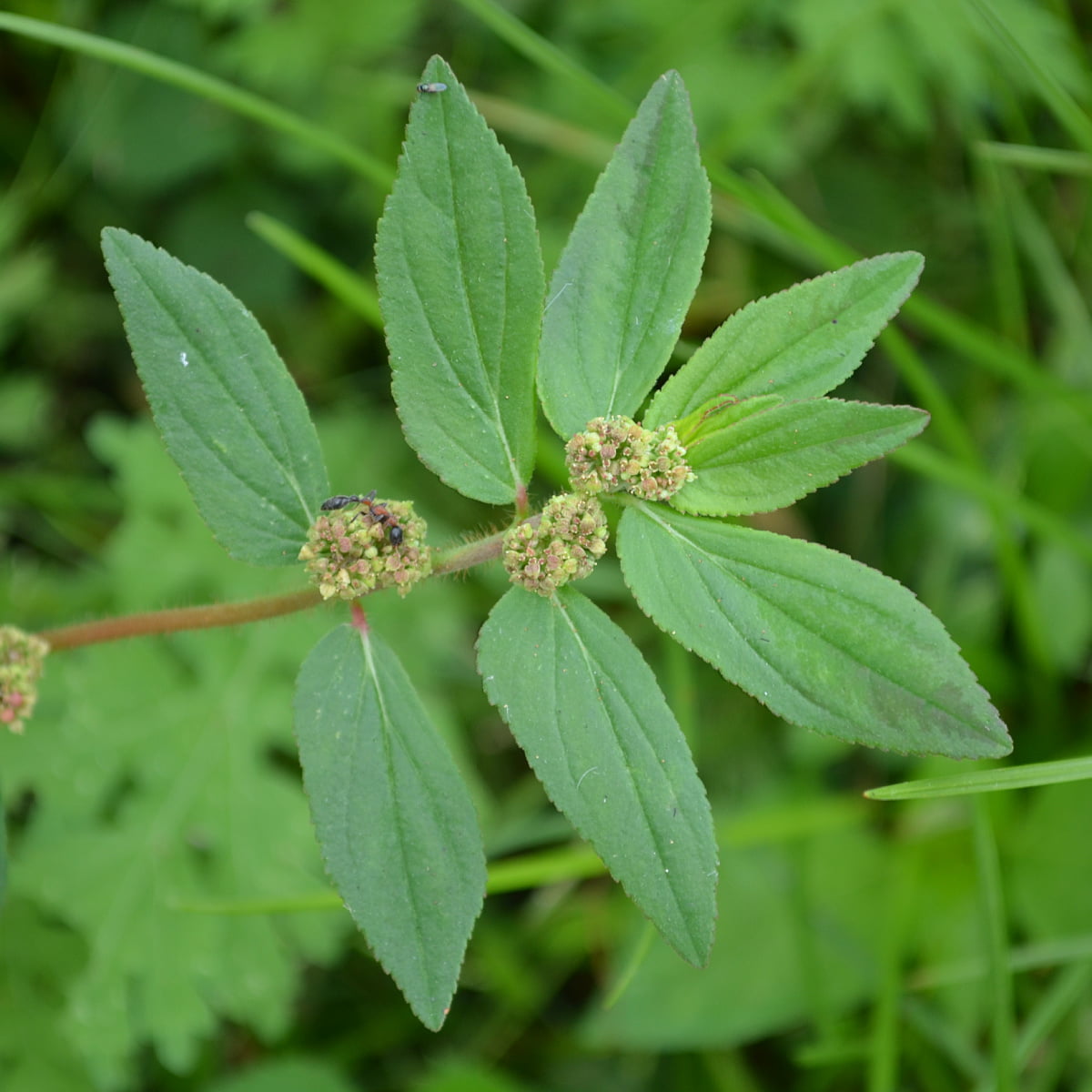
Amman Pacharisi Chemical Constituents:
Phytochemicals are natural compounds found in plants that help protect them from environmental stress. Many of these compounds also offer health benefits to humans and are the reason behind the medicinal properties of various plants. In amman pacharisi, nearly 300 phytochemicals have been identified: 36% are lipids and lipid-like molecules, 27% are phenylpropanoids and polyketides, 10% are organic oxygen compounds, 9% are lignans and related compounds, 5.5% are organic acids, 5% are benzenoids, and 4.4% are organoheterocyclic compounds.
Amman Pacharisi Traditional Uses:
One of the best medicinal uses of the Amman Pacharisi plant is for treating warts. It’s a highly effective natural remedy. Simply apply a drop of the plant’s milky sap to the wart daily. This will soften the wart, and with regular application, it will eventually fall off.
Depending on its size, it might take a week or two to fall off, with smaller warts falling off more quickly. The sap usually doesn’t cause burning or allergies, but if it does, stop using it immediately. This method has been used in South India for many years.
Additionally, Amman Pacharisi is cooked like regular greens to treat constipation, and its flowers are traditionally cooked with milk to increase breast milk production. The plant is also well-known for treating asthma, stomach and mouth ulcers, and for alleviating allergies.
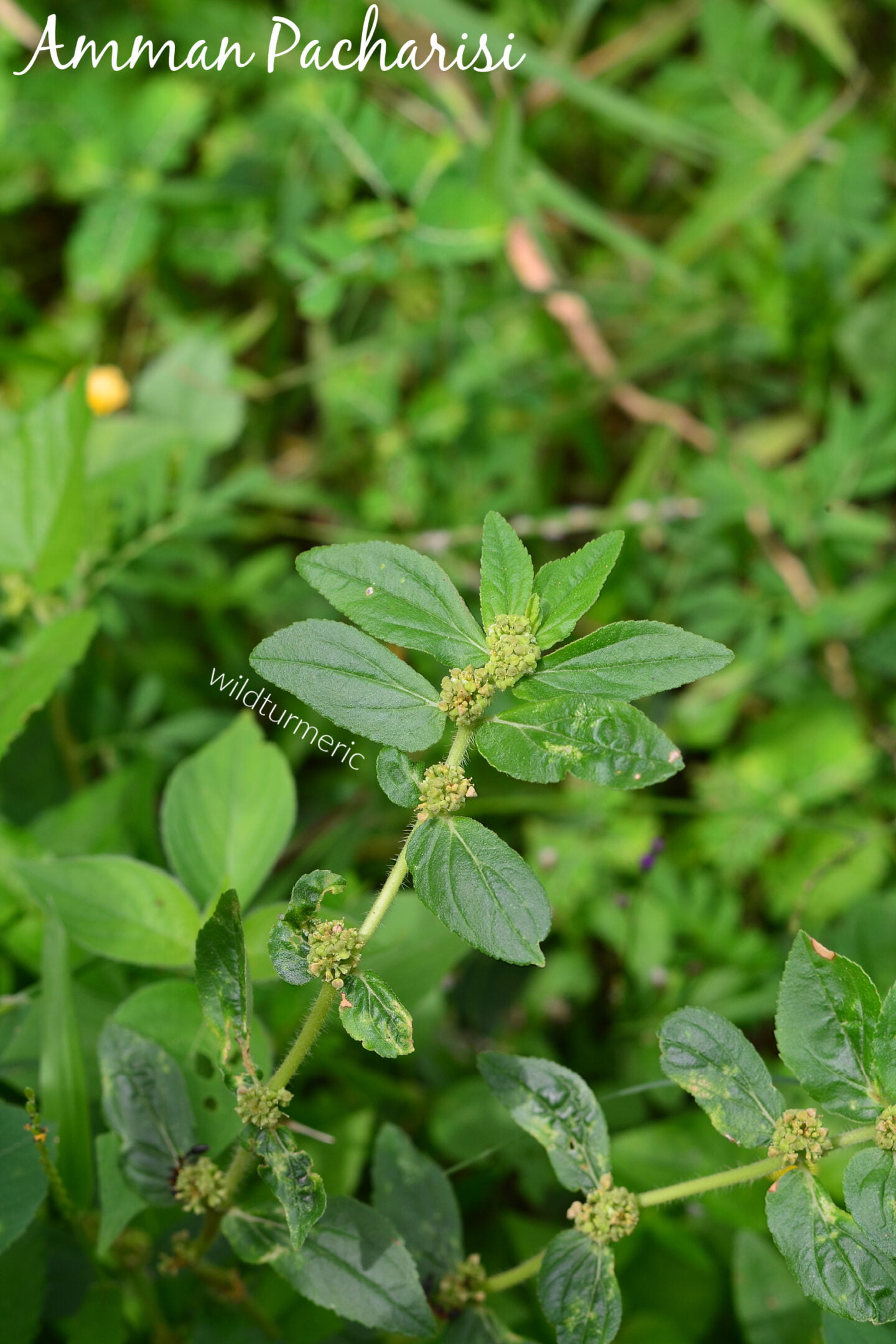
Amman Pacharisi Medicinal Uses:
1. Anti Bacterial Properties:
Amman Pacharisi is highly effective for skincare due to its excellent anti-bacterial properties. The ethanol extract from the plant has been proven to work against common bacterial strains like Escherichia Coli, Pseudomonas Aeruginosa, and Staphylococcus Aureus.
2. Increases Breast Milk:
Amman Pacharisi has long been used to improve breast milk production. The leaves and flowers are cooked with dal and given to breastfeeding mothers. This traditional practice is supported by research, and both the powder and fresh herb can be used to increase breast milk.
3. Anti Asthma Properties:
Drinking a water decoction of Amman Pacharisi, also known as Euphorbia Hirta tea, is a traditional remedy for asthma. This use has now been validated by research. Amman Pacharisi has a relaxing effect on the bronchial tubes, thanks to its flavonoids, glycosides, and saponins, which are responsible for its anti-asthmatic properties.
4. Anti Cancer Properties:
Amman Pacharisi extract has been shown to be cytotoxic to various types of cancer cells. It’s amazing how common herbs, often considered weeds, can be potential life-savers. Amman Pacharisi is particularly effective against malignant melanomas and squamous cell carcinomas.
5. Analgesic, Anti inflammatory and Anti Pyretic Properties:
Amman Pacharisi extract has been proven to reduce pain and inflammation. Drinking the tea can help alleviate inflammation and pain. It also fights infections and reduces fever. When applied as a poultice, it can instantly reduce inflammation and pain in the affected area.
6. Anti Diarrheal Properties:
Amman Pacharisi extract has traditionally been used to treat diarrhea due to its anti-bacterial, anti-amoebic, and anti-spasmodic properties. Typically, the water extract of the whole plant is used, but the leaf powder can also be effective. The flavonoid quercitrin in amman pacharisi is responsible for its anti-diarrheal properties.
7. Treats Warts:
8. Anti Diabetic Properties:
Amman Pacharisi is great for diabetic patients as it helps reduce blood sugar levels, comparable to standard prescription drugs. Diabetic patients should closely monitor their blood sugar levels when taking amman pacharisi along with their medications, as it can significantly lower blood sugar levels.
9. Protects Against Snake Venom:
Amman Pacharisi has amazing protective properties against snake bites. In many villages, it is used as a first aid treatment for snake bites, and this traditional use is supported by research. The compound quercetin-3-O-rhamnoside in amman pacharisi is responsible for its anti-venom properties.
10. Wound Healing Activity:
Amman Pacharisi speeds up wound healing and quickly reduces pain and inflammation. Traditionally, a leaf paste poultice is applied to wounds. It not only heals regular wounds but also burn wounds very quickly, and you can read the study that proves it here.

Amman Pacharisi Side Effects:
Amman Pacharisi has anti-fertility properties; therefore, if you’re trying to get pregnant, it’s best to avoid it. Additionally, a compound in Amman Pacharisi can lower blood pressure, so use it cautiously over long periods. Furthermore, it can interact with blood pressure and diabetic medications, so consult your physician before using it if you’re on these medications.
Where to Get Amman Pacharisi Powder?
3 Top Ways To Use Amman Pacharisi:
1. Amman Pacharisi For Warts:
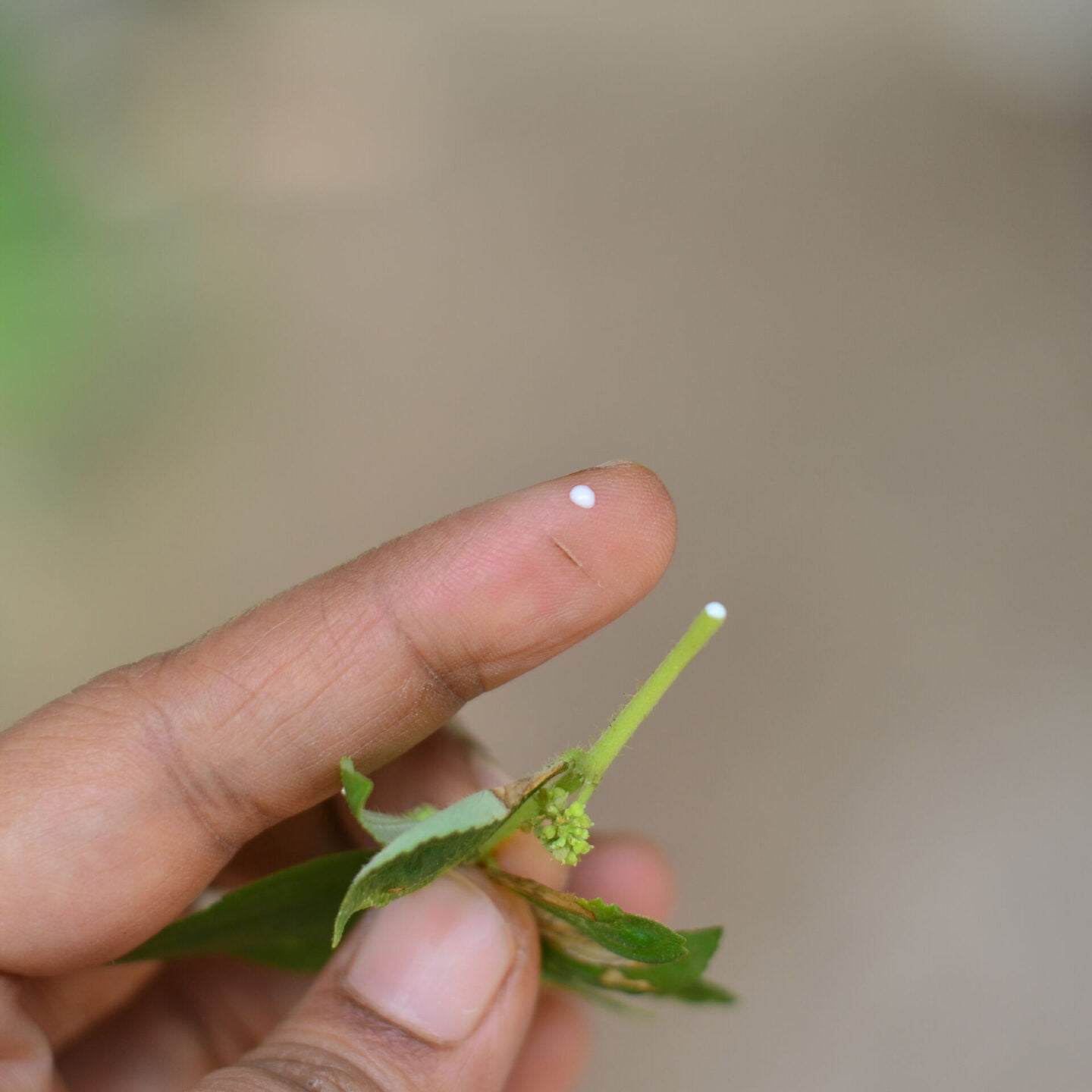
When you break an amman pacharisi plant, you’ll see a milky substance flowing out as small droplets. Apply this milky substance directly to the wart 2 to 3 times a day. Be patient and continue applying it daily until the wart falls off, which might take one to two weeks. You’ll need a fresh plant each time, but since it grows abundantly, it’s easy to find.
2. Amman Pacharisi Tea For Diarrhoea:
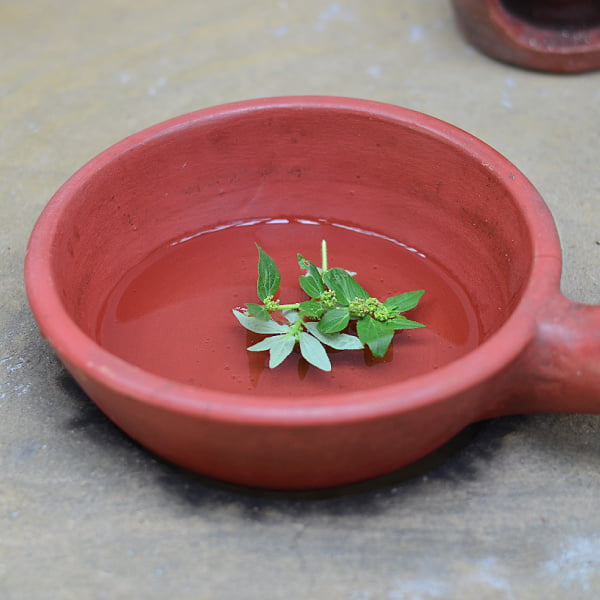
To treat diarrhea, collect a small handful of fresh amman pacharisi leaves and wash them well. Boil a cup of water with the cleaned leaves until the water changes color. Turn off the heat, strain the mixture, and drink it to quickly stop diarrhea. You can also use amman pacharisi powder for this purpose.
3. Amman Pacharisi For Skin Care:
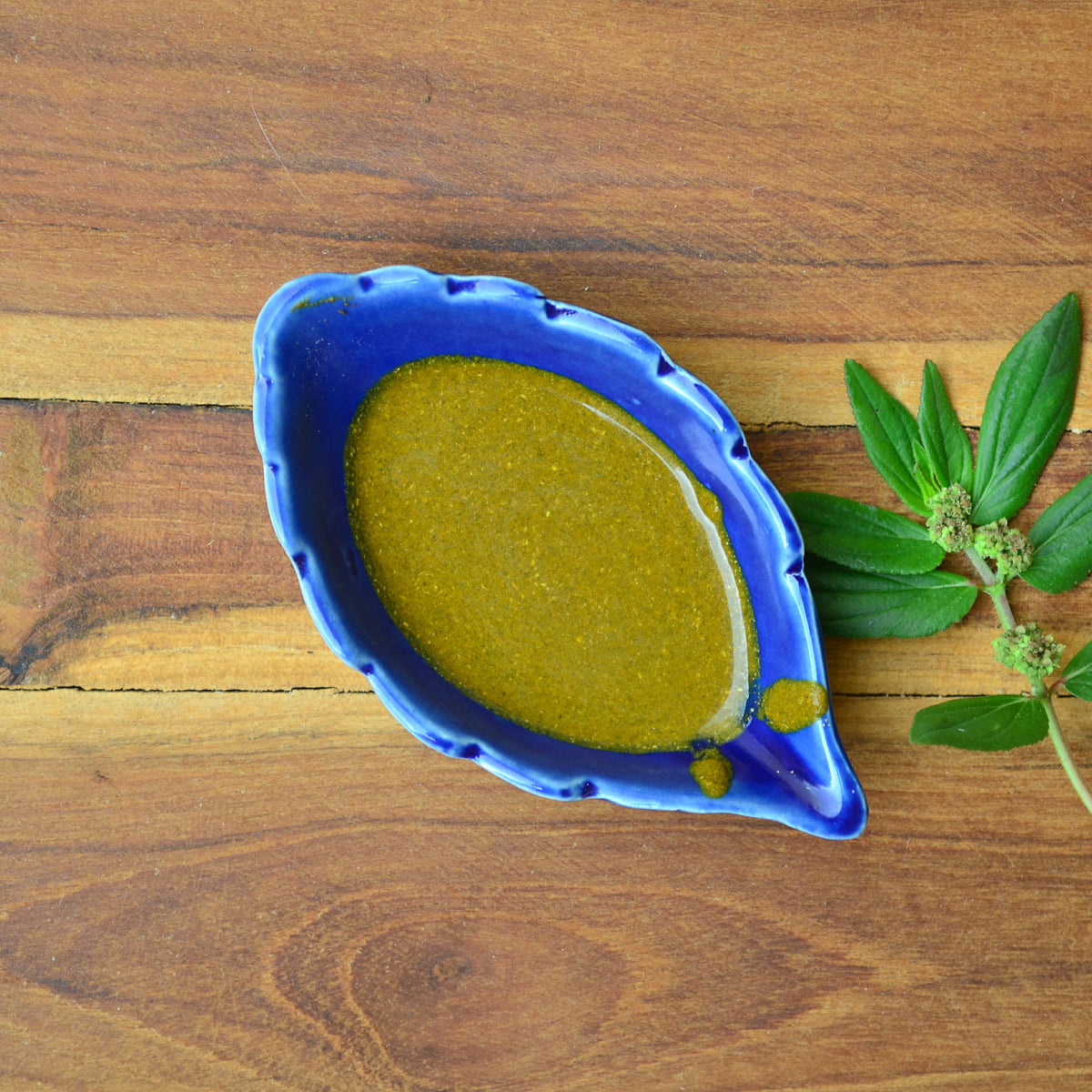
Amman Pacharisi face pack is great for treating pimples. To make it, mix a tablespoon of amman pacharisi powder with a teaspoon of Kasthuri turmeric powder. Add enough rice water to form a paste, then apply it to the pimples. Both kasthuri turmeric and amman pacharisi help prevent and treat pimples, while rice water soothes inflamed skin.
KEY
Discover more from Wildturmeric
Subscribe to get the latest posts sent to your email.

Please post detergent for cloths
I will be posting it within this week…:)
hi how long do u use this plant aand warts is totally gone?
Any other way to remove wart.. i ve it for over 2 yrs
Soumya,I have also heard of apple cider vinegar for removing warts. Try this home remedy: take a cotton ball, apply apple cider vinegar and place it directly on the art and secure it with a tape or bandaid. Continue doing this everyday night till the warts soften and falls off….
Thanks
Ramya have u really cooked Amman pacharisi ???Its abundant here so want to confirm….
Ramya Amman pacharisi is abundant here, want to know if u have cooked them with lentils n tasted?????As posted earlier cooked punarnava was gud….
Dear Priya, I am so happy that you found punarva and cooked it. Amman pacharisi is very safe to consume and I have cooked with lentils and consumed it. It taste like any other greens and is very good for treating stomach and mouth ulcers….
Ramya, i am unable to identify amman pacharisi can you please let me know the telugu name
Keerthana, I think amman pacharisi is called nanabalu in Telugu….
Wgere to get Amman pachari plant in Tamil Nadu
You can find amman pacharisi plant everywhere. But since it is close to the ground, we have to look closely. You can even find them in cities, search for them in waste lands…
Very useful information. Thanks to the contributor. This plant is available on nurseries on ECR. I bought yesterday.
ithu enga kadaikkuym
You can find amman pacharisi plant all over Tamil Nadu, I have seen it even in towns & cities. Look closely for the plant in waste lands, I am sure you will find it…
Very good herb to treat the wart indeed.i used it to heal my brother.too good…
Hi i have small warts all over face and neck.can i use erikalam paal instead of amman pacharisi.i dont know english name
Erukalam is called giant milk weed and though most of the milk weed plant latex is well known for treating warts, I haven't used erukalam pal for warts. I would suggest researching well before using it..
Hi ramya I have many warts all over my face which looks ugly can this tip will help me out and am unable to find did plant but wanted to try it out do help
Ammanpacharisi will help but if you don't find it, you can also try applying pure tea tree oil only on the spot (only apply a tiny drop on the wart and not on the skin as it might burn). It might take a week or two of daily application to see results…
Hi ramya, I applied amman pacharisi on the warts on my face for the past one week or so. Now the warts look as if they've got some pimple at the base. Looks bigger though it's because of the pimple like thing at the base. Is this how it is supposed to heal? Or is this a negative reaction?
Usually there is no pimple like growth like you mentioned when we apply amman pacharisi latex, usually the warts fall off within 2 weeks off application depending on the size of the wart. Do you experience any itching or pain when you are applying the latex?
No ramya. There isn't any itching when I apply the latex. It has scarred badly and I've got dark marks around it now.
I am so very sorry, I have not seen any one react to amman pacharisi like this before. I would suggest to stop using it completely and let the wound heal. If you have any more doubts please ask me any time…
Sure Ramya. Thank you. I'm going to consult my dermatologist now.
Hi.. I have a boil from chicken pox that got left out while all others dried and fell out 3 years back. Is it advisable to use this Amman pacharisi on this chicken pox boil?
Traditionally we apply turmeric and neem leaf paste to get rid of chicken pox boils, I would suggest the same for you too….
Thank you my daughter tonsil adenoid causes severe so what's the herb cure this problem
Thank you my daughter tonsil adenoid causes severe so what's the herb cure this problem
herbal Powder
Shall we use Amman pacharisi powder available online as we don't get the fresh plant?
Yes, you can use amman pacharisi powder too…
Hi Ramya Sister,This leaf can cure pimple in face?
Hi ramya, im having flat warts growing all over my face, it started in my forehead, later it spread to someother parts of the body. I removed the warts with the help of dermatologist but it keeps coming. I did several times. really worried as it spreading fastly.
How long this herb have to take for improving lactation
It really works I have the plant …it is best for warts ..
I have wart very close to my eye. Shall I put this ? Or it will do any irritation or affect my eye? Please reply me
PLEASE CONFIRM THE AVAILABILITY OF Amman pacharisi IN ADAMBAKKAM CHENNAIMY CONTACT IS 9962657616
Can we use it for wart on the sole of the foot for a diabetic patient thanks in advance
Is it good or bad for treating infertility?
have lot of in my home any body need plz cont me email ss738114@gmail.com
Hi Ramya,
I have purchased amman pacharisi powder , kindly let me know how to use the powder for warts, i have very small flat warts on my face on both the side of my cheeks.
I love all the reading about this plant. I live in Honduras,Central America and in my yard this plant or weed as I have called it, is abundant. I would love to know how to prepared it for my husbands skin cancer (SCC)
what a wonderful medicational goodness just surround us.. in malay we called “Ara Tanah”
I had used this plant for treating oligospermia
I have cooked with moongdhal like kooky. It tastes ok like other greens.
Can this plant be used for liver damage
Can this plant cure UTI
How do you you use this herb as anti- snake venom ? Do you smear a paste of it on the spot bitten or you ingest it kindly clarify.
I feed it to my rabbits and they are very healthy I do not call the vet for them.
Little did I know it has such massive medicinal properties